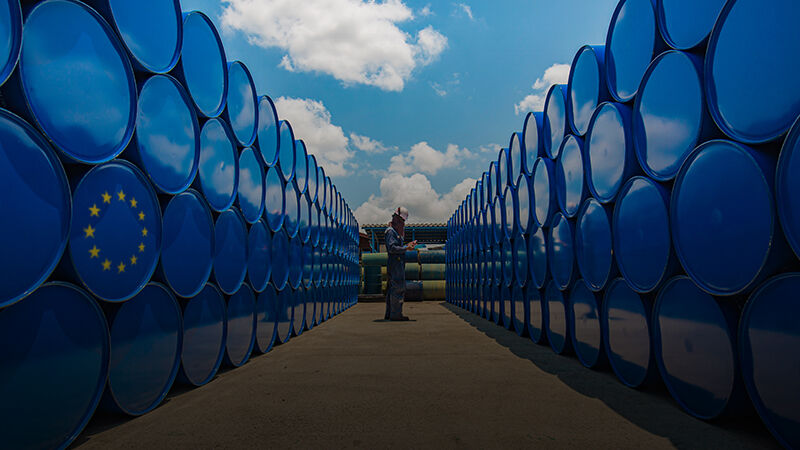Unbeknown to many companies outside of the United States, the US has reinstated a long-dormant environmental tax known as the Superfund Excise Tax, which impacts certain companies in the EU and UK — especially those involved in the chemical, gas, and petroleum industries.
Reinstated as part of the (IIJA), the Superfund Excise Tax was originally part of a government-led effort to clean up toxic waste dump sites across the United States. The initial Superfund Excise Tax expired in 1995 but has been revived and revised, targeting importers, producers and sellers of certain chemicals and hazardous substances.
Which European companies could be liable?
Companies headquartered in the EU and UK that are either importing into the US or producing in the US.
Any of the 42 taxable chemicals listed—or any imported hazardous substances (i.e., containing greater than 20% of any taxable chemical)—could be liable under the new law, with the IRS having specifically identified 151 hazardous substances to date, with more expected to be added to the defined list prospective. If a company’s activities do fall under the scope of these new taxes, how the taxes are levied could represent a signficant compliance challenge for the companies involved.
For example, under the original Superfund Excise Tax, substances containing 50% or more of a listed chemical were considered taxable, but that threshold has been reduced to 20%, significantly expanding the tax’s reach. “Hazardous substances” are taxed according to the pro rata amount of taxable chemical(s) contained in the substance.
In order to comply, companies in scope will need to analyze the chemical composition of all their products and determine where along the supply chain any taxable chemicals or substances are imported into, or produced the US, and by whom.
Furthermore, the tax chemicals is calculated by volume and ranges from $0.44 to $9.74 per US ton, depending on how the chemical is being sold, used, or stored. So again, companies for which the tax applies, should review their activities holistically (eg, imports, exports, manufacturing), and the availability of data to analyze, as this tax has multiple impact points throughout the supply chain.
What chemicals and substances are included?
Industry segments most likely to be affected are the Chemicals and Oil and Gas industry sectors, as they are the primary producers and/or users of such chemicals.
Some common chemicals included in the Internal Revenue’s official list are:
- acetic acid
- benzoic acid
- butanol
- chlorine
- ethyl chloride
- glycerin
- polypropylene (in many forms)
There are exemptions for the production of fertilizer, animal feed, and certain types of fuel, depending on how they are used, as well as substances that have a “transitory presence” during the smelting or refining process. Also, what constitutes a “taxable event” is slightly different for chemicals and substances.
According to the IRS, the taxable event for chemicals is the sale or use of the chemical by the manufacturer, producer, or importer, and the tax is due upon the first sale or use of the chemical. For hazardous substances, the taxable event is the importation of the substance, and the tax is due upon the first sale or use after the substance is imported.
A US tax only
It’s important to note that this is a United States imposed tax on activities occurring with the country. The tax generally only applies to imported chemicals and substances that remain in the US market, and as such, exporters may be entitled to credits and refunds, provided they have the data to prove such qualification.
Crude oil and other petroleum product importers should also note that beginning January 1 2023, the Superfund Excise Tax on such products has not also been reinstated, with an increase from 9.7 cents per barrel to 16.4 cents per barrel, indexed to inflation, and this is imposed in addition to the existing Federal Oil Spill Tax.
____________________________________________________________
Find out how organizations are responding to the reinstated and expanded Superfund Excise Tax in our free on-demand webinar
_____________________________________________________________________________________________
What action needs be taken?
Affected companies do not have much time to determine if the new Superfund Excise Tax applies to them. The first quarterly reports for the tax on IRS Form 720 are due October 31, 2022, and importers with estimated tax totals of more than $2,500 per year were required to start making bi-weekly deposits to the Superfund as early as July of this year (2022).
Needless to say, the new Superfund Excise Tax gives affected companies plenty to think about, but not much time to act. To prepare for this tax, a European based company that imports a taxable chemical or substance into the US could:
- assess whether and how the tax applies to them
- determine how to properly calculate and remit any taxes that are due
- determine if they qualify for any refunds or exemptions
Fortunately software is available to help, and the repetitive, cyclical nature of the taxes makes them an ideal candidate for automation—something else that was not available in 1995.
Thomson Reuters ONESOURCE Determination can help manage Superfund Excise Taxes by automatically and accurately calculating the amount of tax owed.










